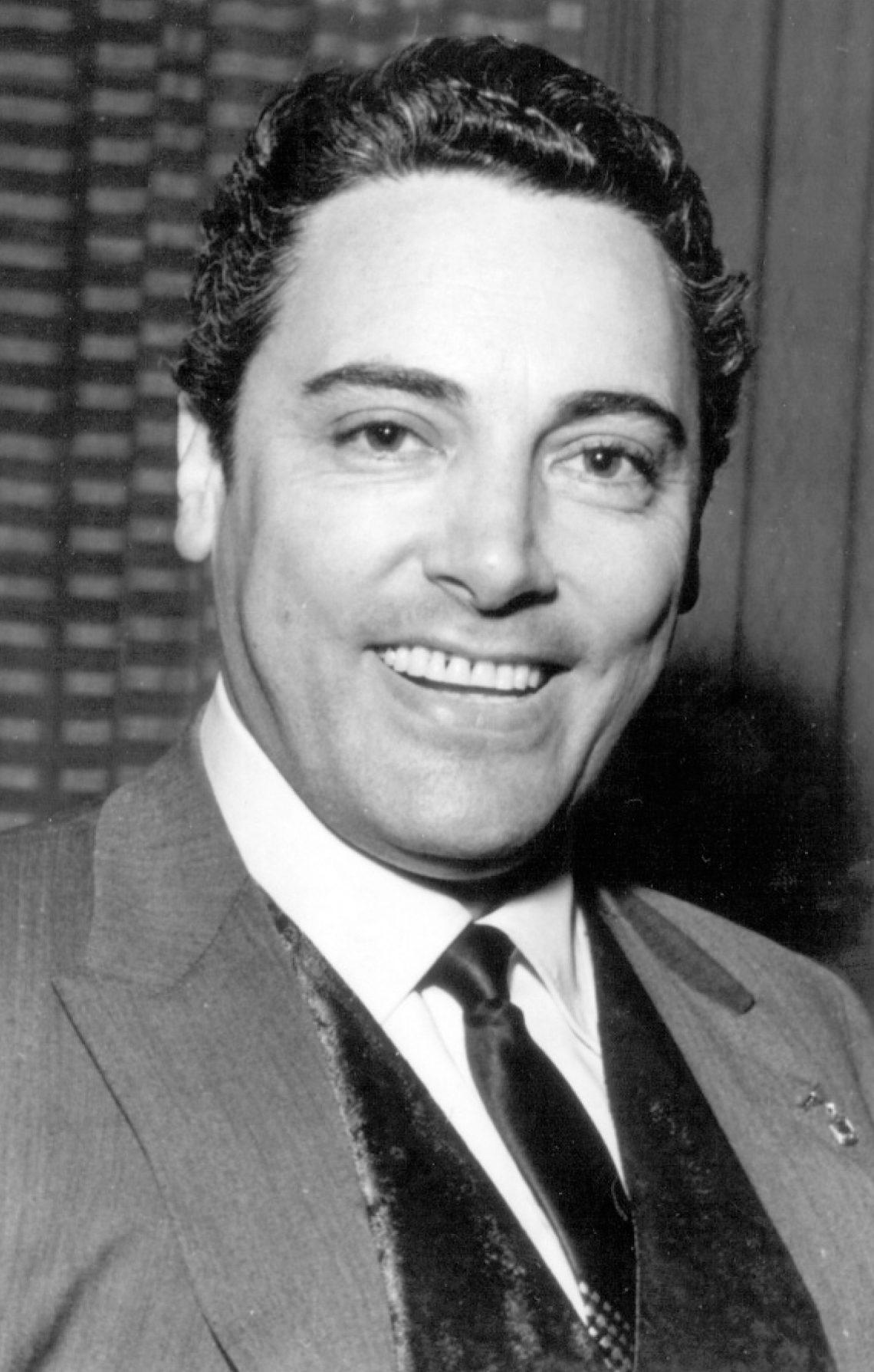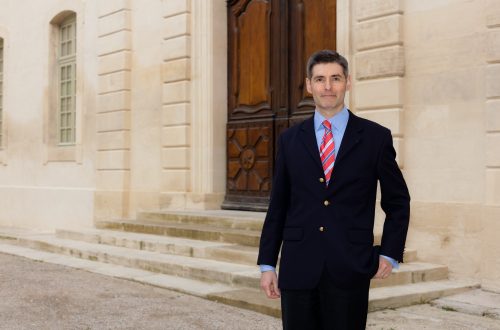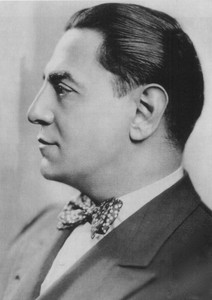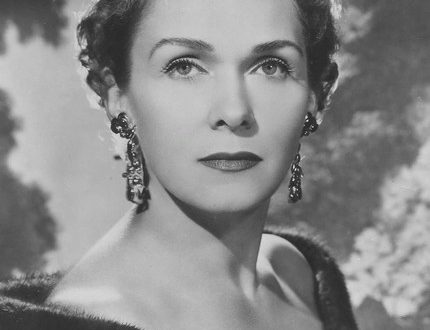
Mario Del Monaco |
Mario Del Monaco
To the 20th anniversary of death
Student of L. Melai-Palazzini and A. Melocchi. He made his debut in 1939 as Turridu (Mascagni’s Rural Honor, Pesaro), according to other sources – in 1940 in the same part at the Teatro Communale, Calli, or even in 1941 as Pinkerton (Puccini’s Madama Butterfly, Milan). In 1943, he performed on the stage of the La Scala Theatre, Milan as Rudolph (Puccini’s La Boheme). From 1946 he sang in Covent Garden, London, in 1957-1959 he performed at the Metropolitan Opera, New York (parts of De Grieux in Puccini’s Manon Lescaut; José, Manrico, Cavaradossi, Andre Chenier). In 1959 he toured the USSR, where he triumphantly performed as Canio (Pagliacci by Leoncavallo; conductor – V. Nebolsin, Nedda – L. Maslennikova, Silvio – E. Belov) and Jose (Carmen by Bizet; conductor – A. Melik -Pashaev, in the title role – I. Arkhipova, Escamillo – P. Lisitsian). In 1966 he performed the part of Sigmund (Wagner’s Valkyrie, Stuttgart). In 1974 he performed the role of Luigi (Puccini’s Cloak, Torre del Lago) in a performance on the occasion of the fiftieth anniversary of the composer’s death, as well as in several performances of Pagliacci in Vienna. In 1975, having given 11 performances within 20 days (the San Carlo theaters, Naples and Massimo, Palermo), he completed a brilliant career that lasted more than 30 years. He died shortly after a car accident in 1982. The author of the memoirs “My life and my successes.”
Mario Del Monaco is one of the greatest and most outstanding singers of the XNUMXth century. The greatest master of the mid-century bel canto art, he used the lowered larynx method he learned from Melocchi in singing, which gave him the ability to produce a sound of great power and steely brilliance. Perfectly suited for heroic-dramatic roles in late Verdi and verist operas, unique in richness of timbre and energy, Del Monaco’s voice was as if created for the theater, although at the same time he was less good in the recording. Del Monaco is rightfully considered the last tenor di forza, whose voice made the glory of bel canto in the past century and is on a par with the greatest masters of the XNUMXth century. Few could compare with him in terms of sound power and endurance, and no one, including the outstanding Italian singer of the second half of the XNUMXth century, Francesco Tamagno, with whom the thunderous voice of Del Monaco is most often compared, could not maintain such purity and freshness for such a long time. sound.
The specifics of the voice setting (the use of large strokes, indistinct pianissimo, the subordination of intonational integrity to affective play) provided the singer with a very narrow, mostly dramatic repertoire, namely 36 operas, in which, however, he reached outstanding heights (the parts of Ernani, Hagenbach (“Valli” by Catalani ), Loris (“Fedora” by Giordano), Manrico, Samson (“Samson and Delilah” by Saint-Saens)), and the parts of Pollione (“Norma” by Bellini), Alvaro (“Force of Destiny” by Verdi), Faust (“Mephistopheles” by Boito ), Cavaradossi (Puccini’s Tosca), Andre Chenier (Giordano’s opera of the same name), Jose, Canio and Otello (in Verdi’s opera) became the best in his repertoire, and their performance is the brightest page in the world of opera art. So, in his best role, Othello, Del Monaco eclipsed all his predecessors, and it seems that the world has not seen a better performance in the 1955th century. For this role, which immortalized the name of the singer, in 22 he was awarded the Golden Arena Prize, awarded for the most outstanding achievements in opera art. For 1950 years (debut – 1972, Buenos Aires; last performance – 427, Brussels) Del Monaco sang this most difficult part of the tenor repertoire XNUMX times, setting a sensational record.
It will also be important to note that the singer in almost all parts of his repertoire has achieved a magnificent combination of emotional singing and heartfelt acting, forcing, according to many viewers, to sincerely sympathize with the tragedy of his characters. Tormented by the torments of a wounded soul, lonely Canio, in love with the woman Jose playing with his feelings, highly morally accepting the death of Chenier, finally succumbing to an insidious plan, a naive, trusting brave Moor – Del Monaco was able to express the whole gamut of feelings both as a singer and as a great artist.
Del Monaco was equally great as a person. It was he who at the end of the 30s decided to audition one of his old acquaintances, who was going to devote herself to opera. Her name was Renata Tebaldi and the star of this great singer was destined to shine partly because her colleague, who by that time had already begun a solo career, predicted a great future for her. It was with Tebaldi that Del Monaco preferred to perform in his beloved Othello, perhaps seeing in her a person close to himself in character: infinitely loving opera, living in it, capable of any sacrifice for it, and at the same time possessing a broad nature and a big heart . With Tebaldi, it was simply calmer: they both knew that they had no equal and that the throne of the world opera entirely belonged to them (at least within the boundaries of their repertoire). Del Monaco sang, of course, with another queen, Maria Callas. With all my love for Tebaldi, I cannot but note that Norma (1956, La Scala, Milan) or André Chenier, performed by Del Monaco together with Callas, are masterpieces. Unfortunately, Del Monaco and Tebaldi, who were ideally suited to each other as artists, apart from their repertoire differences, were also limited by their vocal technique: Renata, striving for intonational purity, sometimes intimate nuances, was drowned out by the powerful singing of Mario, who wanted to most fully express what was happening in the soul of his hero. Although, who knows, it is possible that this was the best interpretation, because it is unlikely that Verdi or Puccini wrote only so that we could hear another passage or piano performed by a soprano, when an offended gentleman demands an explanation from his beloved or an aged warrior confesses in love with a young wife.
Del Monaco also did a lot for the Soviet operatic art. After a tour in 1959, he gave the Russian theater an enthusiastic assessment, in particular, noting the highest professionalism of Pavel Lisitsian in the role of Escamillo and the amazing acting skills of Irina Arkhipova in the role of Carmen. The latter was the impetus for Arkhipova’s invitation to perform at the Neapolitan San Carlo Theater in 1961 in the same role and the first Soviet tour at the La Scala Theatre. Later, many young singers, including Vladimir Atlantov, Muslim Magomaev, Anatoly Solovyanenko, Tamara Milashkina, Maria Bieshu, Tamara Sinyavskaya, went on an internship at the famous theater and returned from there as outstanding speakers of the bel canto school.
The brilliant, ultra-dynamic and extremely eventful career of the great tenor came to an end, as already noted, in 1975. There are many explanations for this. Probably, the singer’s voice is tired from thirty-six years of constant overexertion (Del Monaco himself in his memoirs said that he had bass cords and still treats his tenor career as a miracle; and the method of lowered larynx essentially increases the tension on the vocal cords), although newspapers on the eve of the sixtieth anniversary of the singer noted that even now his voice can break a crystal glass at a distance of 10 meters. It is possible that the singer himself was somewhat tired of a very monotonous repertoire. Be that as it may, after 1975 Mario Del Monaco taught and trained a number of excellent students, including the now famous baritone Mauro Augustini. Mario Del Monaco died in 1982 in the city of Mestre near Venice, never having been able to fully recover from a car accident. He bequeathed to bury himself in the costume of Othello, perhaps wishing to appear before the Lord in the form of someone who, like him, lived his life, being in the power of eternal feelings.
Long before the singer left the stage, the outstanding significance of the talent of Mario Del Monaco in the history of world performing arts was almost unanimously recognized. So, during a tour in Mexico, he was called “the best dramatic tenor of the living”, and Budapest elevated him to the rank of the greatest tenor in the world. He has performed in almost all the major theaters in the world, from the Colon Theater in Buenos Aires to the Tokyo Opera.
At the beginning of his career, having set himself the goal of finding his own path in art, and not becoming one of the many epigones of the great Beniamino Gigli, who then dominated the opera firmament, Mario Del Monaco filled each of his stage images with new colors, found his own approach to each sung part and remained in the memory of spectators and fans of the explosive, crushing, suffering, burning in the flame of love – the Great Artist.
The singer’s discography is quite extensive, but among this variety I would like to note the studio recordings of the parts (most of them were recorded by Decca): – Loris in Giordano’s Fedora (1969, Monte Carlo; choir and orchestra of the Monte Carlo Opera, conductor – Lamberto Gardelli (Gardelli); in the title role – Magda Oliveiro, De Sirier – Tito Gobbi); – Hagenbach in Catalani’s “Valli” (1969, Monte-Carlo; Monte-Carlo Opera Orchestra, conductor Fausto Cleva (Cleva); in the title role – Renata Tebaldi, Stromminger – Justino Diaz, Gellner – Piero Cappuccili); – Alvaro in “Force of Destiny” by Verdi (1955, Rome; choir and orchestra of the Academy of Santa Cecilia, conductor – Francesco Molinari-Pradelli (Molinari-Pradelli); Leonora – Renata Tebaldi, Don Carlos – Ettore Bastianini); – Canio in Pagliacci by Leoncavallo (1959, Rome; orchestra and choir of the Academy of Santa Cecilia, conductor – Francesco Molinari-Pradelli; Nedda – Gabriella Tucci, Tonio – Cornell MacNeil, Silvio – Renato Capecchi); – Othello (1954; orchestra and choir of the Academy of Santa Cecilia, conductor – Alberto Erede (Erede); Desdemona – Renata Tebaldi, Iago – Aldo Protti).
An interesting broadcast recording of the performance “Pagliacci” from the Bolshoi Theater (during the already mentioned tours). There are also “live” recordings of operas with the participation of Mario Del Monaco, among them the most attractive are Pagliacci (1961; Radio Japan Orchestra, conductor – Giuseppe Morelli; Nedda – Gabriella Tucci, Tonio – Aldo Protti, Silvio – Attilo D’Orazzi) .
Albert Galeev, 2002
“One of the outstanding modern singers, he possessed rare vocal abilities,” writes I. Ryabova. “His voice, with an extensive range, extraordinary strength and richness, with baritone lows and sparkling high notes, is unique in timbre. Brilliant craftsmanship, a subtle sense of style and the art of impersonation allowed the artist to perform diverse parts of the operatic repertoire. Especially close to Del Monaco are the heroic-dramatic and tragic parts in the operas of Verdi, Puccini, Mascagni, Leoncavallo, Giordano. The biggest achievement of the artist is the role of Otello in Verdi’s opera, performed with courageous passion and deep psychological truthfulness.
Mario Del Monaco was born in Florence on July 27, 1915. He later recalled: “My father and mother taught me to love music since childhood, I started singing from the age of seven or eight. My father was not musically educated, but he was very well versed in vocal art. He dreamed that one of his sons would become a famous singer. And he even named his children after opera heroes: me – Mario (in honor of the hero of “Tosca”), and my younger brother – Marcello (in honor of Marcel from “La Boheme”). At first, the father’s choice fell on Marcello; he believed that his brother had inherited his mother’s voice. My father once said to him in my presence: “You will sing Andre Chenier, you will have a beautiful jacket and high-heeled boots.” Frankly, I was very jealous of my brother then.
The boy was ten years old when the family moved to Pesaro. One of the local singing teachers, having met Mario, spoke very approvingly about his vocal abilities. Praise added enthusiasm, and Mario began to diligently study opera parts.
Already at the age of thirteen, he first performed at the opening of a theater in Mondolfo, a small neighboring town. Regarding Mario’s debut in the title role in Massenet’s one-act opera Narcisse, a critic wrote in a local newspaper: “If the boy saves his voice, there is every reason to believe that he will become an outstanding singer.”
By the age of sixteen, Del Monaco already knew many operatic arias. However, only at the age of nineteen, Mario began to study seriously – at the Pesar Conservatory, with Maestro Melocchi.
“When we met, Melokki was fifty-four years old. There were always singers in his house, and among them very famous ones, who came from all over the world for advice. I remember long walks together through the central streets of Pesaro; the maestro walked surrounded by students. He was generous. He did not take money for his private lessons, only occasionally agreeing to be treated to coffee. When one of his students managed to cleanly and confidently take a high beautiful sound, sadness disappeared from the eyes of the maestro for a moment. “Here! he exclaimed. “It’s a real coffee b-flat!”
My most treasured memories of my life in Pesaro are those of Maestro Melocchi.”
The first success for the young man was his participation in the competition of young singers in Rome. The competition was attended by 180 singers from all over Italy. Performing arias from Giordano’s “André Chénier”, Cilea’s “Arlesienne” and Nemorino’s famous romance “Her Pretty Eyes” from L’elisir d’amore, Del Monaco was among the five winners. The aspiring artist received a scholarship that gave him the right to study at the school at the Rome Opera House.
However, these studies did not benefit Del Monaco. Moreover, the technique used by his new teacher led to the fact that his voice began to fade, to lose its roundness of sound. Only six months later, when he returned to Maestro Melocchi, he regained his voice.
Soon Del Monaco was drafted into the army. “But I was lucky,” the singer recalled. – Luckily for me, our unit was commanded by a colonel – a great lover of singing. He told me: “Del Monaco, you will definitely sing.” And he allowed me to go to the city, where I rented an old piano for my lessons. The unit commander not only allowed the talented soldier to sing, but also gave him the opportunity to perform. So, in 1940, in the small town of Calli near Pesaro, Mario first sang the part of Turiddu in P. Mascagni’s Rural Honor.
But the real beginning of the artist’s singing career dates back to 1943, when he made his brilliant debut on the stage of Milan’s La Scala theater in G. Puccini’s La Boheme. Shortly thereafter, he sang the part of André Chénier. W. Giordano, who was present at the performance, presented the singer with his portrait with the inscription: “To my dear Chenier.”
After the war, Del Monaco becomes widely known. With great success, he performs as Radames from Verdi’s Aida at the Verona Arena Festival. In the autumn of 1946, Del Monaco toured abroad for the first time as part of the troupe of the Neapolitan theater “San Carlo”. Mario sings on the stage of London’s Covent Garden in Tosca, La Boheme, Puccini’s Madama Butterfly, Mascagni’s Rustic Honor and R. Leoncavallo’s Pagliacci.
“… The next year, 1947, was a record year for me. I performed 107 times, singing once in 50 days 22 times, and traveled from Northern Europe to South America. After years of hardship and misfortune, it all seemed like a fantasy. Then I got an amazing contract for a tour in Brazil with an incredible fee for those times – four hundred and seventy thousand lire for a performance …
In 1947 I performed in other countries as well. In the Belgian city of Charleroi, I sang for Italian miners. In Stockholm I performed Tosca and La bohème with the participation of Tito Gobbi and Mafalda Favero…
Theaters have already challenged me. But I haven’t performed with Toscanini yet. Returning from Geneva, where I sang in the Masquerade Ball, I met maestro Votto at the Biffy Scala cafe, and he said that he intended to propose my candidacy to Toscanini to participate in a concert dedicated to the opening of the newly restored La Scala theater “…
I first appeared on the stage of the La Scala theater in January 1949. Performed “Manon Lescaut” under the direction of Votto. A few months later, Maestro De Sabata invited me to sing in the opera performance André Chénier in Giordano’s memory. Renata Tebaldi performed with me, who became the star of La Scala after participating with Toscanini in a concert at the re-opening of the theater … “
The year 1950 brought the singer one of the most important creative victories in his artistic biography at the Colon Theater in Buenos Aires. The artist performed for the first time as Otello in Verdi’s opera of the same name and captivated the audience not only with a brilliant vocal performance, but also with a wonderful acting decision. image. Reviews of critics are unanimous: “The role of Othello performed by Mario Del Monaco will remain inscribed in golden letters in the history of the Colon Theatre.”
Del Monaco later recalled: “Wherever I performed, everywhere they wrote about me as a singer, but no one said that I was an artist. I fought for this title for a long time. And if I deserved it for the performance of the part of Othello, apparently, I still achieved something.
Following this, Del Monaco went to the United States. The singer’s performance in “Aida” on the stage of the San Francisco Opera House was a triumphant success. New success was achieved by Del Monaco on November 27, 1950, performing Des Grieux in Manon Lescaut at the Metropolitan. One of the American reviewers wrote: “The artist not only has a beautiful voice, but also an expressive stage appearance, a slender, youthful figure, which not every famous tenor can boast of. The upper register of his voice completely electrified the audience, who immediately recognized Del Monaco as a singer of the highest class. He reached real heights in the last act, where his performance captured the hall with a tragic force.
“In the 50s and 60s, the singer often toured various cities in Europe and America,” writes I. Ryabova. — For many years he was simultaneously the premiere of two leading world opera scenes — Milan’s La Scala and New York’s Metropolitan Opera, repeatedly participating in performances that open new seasons. By tradition, such performances are of particular interest to the public. Del Monaco sang in many performances that have become memorable for the New York audience. His partners were the stars of world vocal art: Maria Callas, Giulietta Simionato. And with the wonderful singer Renata Tebaldi Del Monaco had special creative ties – joint performances of two outstanding artists have always become an event in the musical life of the city. Reviewers called them “the golden duet of Italian opera”.
The arrival of Mario Del Monaco in Moscow in the summer of 1959 aroused great interest among admirers of vocal art. And the expectations of Muscovites were fully justified. On the stage of the Bolshoi Theater, Del Monaco performed the parts of Jose in Carmen and Canio in Pagliacci with equal perfection.
The success of the artist in those days is truly triumphant. This is the assessment given to the performances of the Italian guest by the famous singer E.K. Katulskaya. “Del Monaco’s outstanding vocal abilities are combined in his art with amazing skill. No matter how powerful the singer achieves, his voice never loses its light silvery sound, softness and beauty of timbre, penetrating expressiveness. Just as beautiful is his mezzo voce and bright, easily rushing into the piano room. Mastery of breathing, which gives the singer a wonderful support of sound, the activity of each sound and word – these are the foundations of Del Monaco’s mastery, this is what allows him to freely overcome extreme vocal difficulties; it is as if the difficulties of tessitura do not exist for him. When you listen to Del Monaco, it seems that the resources of his vocal technique are endless.
But the fact of the matter is that the technical skill of the singer is completely subordinated to artistic tasks in his performance.
Mario Del Monaco is a real and great artist: his brilliant stage temperament is polished by taste and skill; the smallest details of his vocal and stage performance are carefully considered. And what I especially want to emphasize is that he is a wonderful musician. Each of his phrases is distinguished by the severity of the musical form. The artist never sacrifices music to external effects, emotional exaggerations, which sometimes even very famous singers sin … The art of Mario Del Monaco, academic in the best sense of the word, gives us a true idea of the classical foundations of the Italian vocal school.
Del Monaco’s operatic career continued brilliantly. But in 1963, he had to stop his performances after he got into a car accident. Having courageously coped with the disease, the singer again pleases the audience a year later.
In 1966, the singer realized his old dream, at the Stuttgart Opera House Del Monaco he performed the part of Sigmund in R. Wagner’s “Valkyrie” in German. It was another triumph for him. The composer’s son Wieland Wagner invited Del Monaco to take part in the performances of the Bayreuth Festival.
In March 1975, the singer leaves the stage. In parting, he gives several performances in Palermo and Naples. On October 16, 1982, Mario Del Monaco passed away.
Irina Arkhipova, who has performed with the great Italian more than once, says:
“In the summer of 1983, the Bolshoi Theater toured Yugoslavia. The city of Novi Sad, justifying its name, pampered us with warmth, flowers … Even now I don’t remember who exactly destroyed this atmosphere of success, joy, sun in an instant, who brought the news: “Mario Del Monaco has died.” It became so bitter in my soul, it was so impossible to believe that there, in Italy, there was no more Del Monaco. And after all, they knew that he was seriously ill for a long time, the last time greetings from him were brought by the musical commentator of our television, Olga Dobrokhotova. She added: “You know, he jokes very sadly:“ On the ground, I already stand on one leg, and even that slides on a banana peel. And that’s all…
The tour continued, and from Italy, as a mourning counterpoint to the local holiday, details about farewell to Mario Del Monaco came. It was the last act of the opera of his life: he bequeathed to be buried in the costume of his favorite hero – Othello, not far from Villa Lanchenigo. The coffin was carried all the way to the cemetery by famous singers, compatriots of Del Monaco. But these sad news also dried up … And my memory immediately, as if fearing the onset of new events, experiences, began to return to me, one after another, the paintings associated with Mario Del Monaco.





